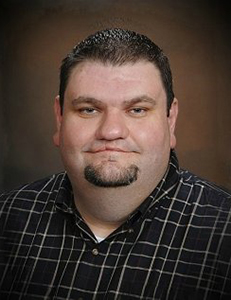Advanced Injection Molding
Course description
Time: 8:00 AM - 4:00 PM
Location: 240 South Forge Street, Akron, Ohio 44325
Classroom 217 (Located inside the National Polymer Innovation Center)
Cost:
$1,400 USD
CEU's: 2.4
Instructor: Mr. Rob Hickman
Course Overview
- Introduction to Plastics
- Advanced Molding Processes
- Stack molds
- Rotary stacks
- 2, 3 and 4-shot
- Over-molding / insert molding
- Gas assist
- Water assist
- Injection-compression molding
- Compression molding
- High cavitation molding
- High speed molding
- Large machine molding
- Structural from / Mucell
- Work cells
- Pulse cooling / Variotherm (variable cooling technologies)
- In-mold labeling
- Fiber matte composite molding
- Horizontal / Vertical injection molding
- Metal injection molding
Who Should Attend: This course is designed for plastics professionals including engineers, managers, quality assurance, manufacturing and sales personnel desiring to build upon a solid foundation in the area of advanced injection molding.
Please note: 8:00 a.m. - 4:00 p.m. on first two days of class; 8:00 a.m. - 12:00 p.m. on third day of class (1/2 day).
Instructor Biography:
 Mr. Hickman is a graduate Mechanical Engineer with over 30 years of polymer engineering experience in the field. In addition, Robert has received advanced Polymer Engineering training from various institutions including the University of Akron (one of the top 10 polymer engineering universities in the nation). His education further includes certifications in marketing from Cleveland State University, I.T. certifications from Edison Community College, Mold flow Corporation, Coretech Systems, CTRL Systems, AC Technologies, Ohio CAE Services, University of Akron Polymer Training Center, and the Solidworks Corporation.
Mr. Hickman is a graduate Mechanical Engineer with over 30 years of polymer engineering experience in the field. In addition, Robert has received advanced Polymer Engineering training from various institutions including the University of Akron (one of the top 10 polymer engineering universities in the nation). His education further includes certifications in marketing from Cleveland State University, I.T. certifications from Edison Community College, Mold flow Corporation, Coretech Systems, CTRL Systems, AC Technologies, Ohio CAE Services, University of Akron Polymer Training Center, and the Solidworks Corporation.
Robert has significant hands-on experience with productivity programs, product design, concurrent development and optimization, finite element analysis, various CAD/CAM/CAE softwares and Lean/Six Sigma principles (Green Belt) in the manufacturing sector.
A significant portion of Mr. Hickman’s experience in the polymer industry was obtained on the manufacturing floor, directing a problem-solving environment. In addition to his hands-on experience, Mr. Hickman has taught polymer related courses at the University of Akron (APTC), participated in several beta testing programs for well-known softwares such as I-deas (now NX), Solidworks, C-Mold and Moldex3D. For several years, Mr. Hickman served as the Global Plastic Simulation Special Interest Group Chairman for the I-deas user group known as ICCON and served on the board of the Society of Manufacturing Engineers (Plastics Tooling Division).
- Machine Technologies – Modern spins on old principles
- Controller systems & functionality
- Accuracy levels
- Interfaces with auxiliary equipment
- Integrating CAE software technologies
- Machine Design – Clamp Deflections minimized
- Controller systems & functionality
- Tooling Technologies for Modern Molding
- Single face vs. Multi-face tooling
- Designing for robustness and efficiency
- Machining tolerances of modern equipment
- Mold materials
- Steels
- Alloys
- Composites
- Prototypes vs. Production molds
- Cooling Strategies / Additive manufacturing (EOS – 3D printing)
- World class mold building principles – Competing in a revolutionized global economy
- Reshoring efforts
- Polymer Mechanics and Effects on Manufacturing
- Understanding Plastics
- Plastic material types, grades, families
- Properties, additives and preparation
- Scientific Molding
- Establishing a scientific molding process
- 7-step to scientific troubleshooting
- Defects
- Purging materials and techniques
- Basic mold and part design guidelines
- Units and conversions
- Frequently used calculations
- Importance of training
- Process Controls and Automation
- Lean Manufacturing basics
- Six Sigma principles and benefits
- Leveraging Advanced Mold Flow results – fact vs fiction
- Processing for profit
- Maintaining Control / Making Timely Adjustments for high quality molding
- Workforce Topics
- Generational differences – knowing how to succeed with everyone on your team
- Centennials (Gen Z) – Millennials (Gen Y) – Gen X – Baby boomers, etc.
- Generational differences – knowing how to succeed with everyone on your team
- Shop Floor Lab Exercises
- Change molds in the machines to more complex tooling (see what’s available)
- Focus on a scientific molding process setup
- Get a demo of the Nautilus (Fimmtech) software to use
- Process
- Gather data from existing molds and given requirements
- Run DOE analysis on Nautilus software
- Review results
- Enter new process parameters from software and see if the molding window is compliant with stated objectives.
*** Akron Polymer Training Services now offers remote learning training courses featuring live instructors. For more information, visit our Online Course Requirements webpage. ***
